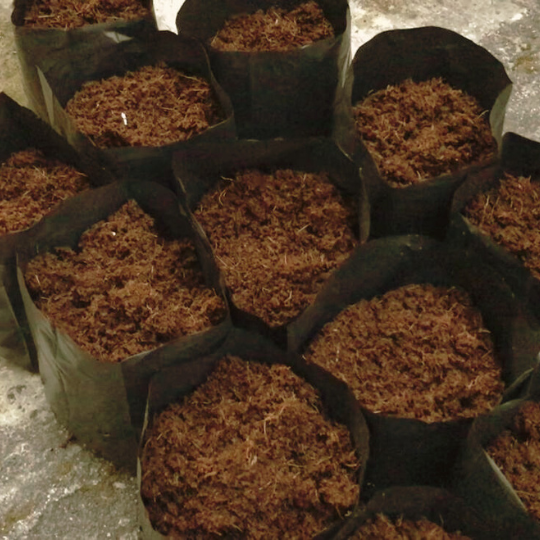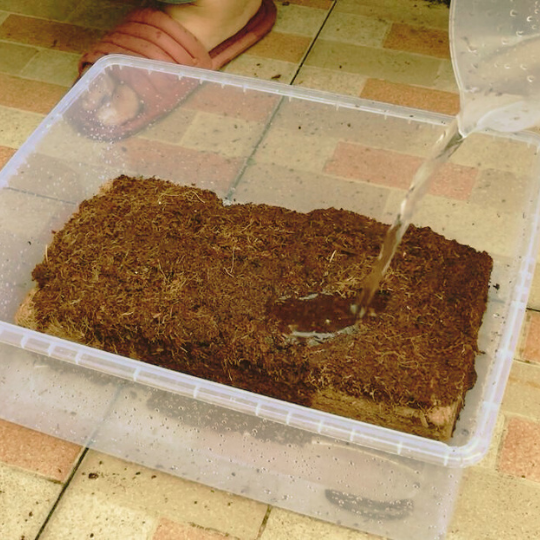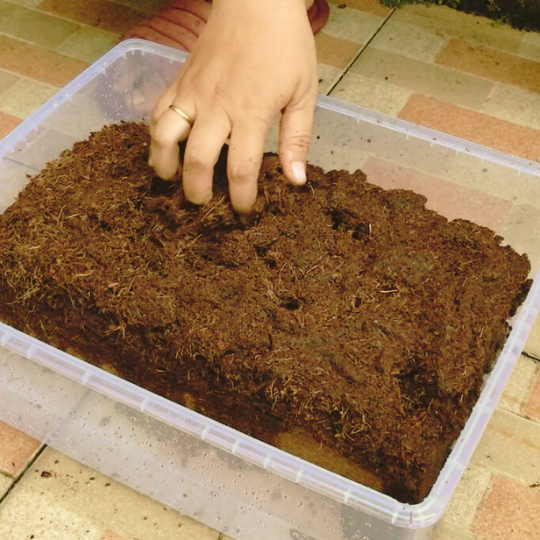Coco peat vs coir – Curious about the differences between coco peat and coir? Wondering which one is best for your gardening needs? Dive in as we unravel the distinctions and benefits of these popular growing mediums like coco coir, coco peat, and different composts. Whether you’re a seasoned gardener or just starting out, understanding these two options can elevate your planting game. Let’s explore the unique properties, uses, and advantages of coco peat versus coir to help you make informed decisions for your green space.

What is Coco Peat and Coir
Definition and Origins
Coco peat, also known as coir, is a byproduct of the coconut industry, derived from the husk of coconuts. It is a natural and eco-friendly alternative that uses coco coir to traditional peat moss. The origins of coco peat date back to ancient Sri Lanka, where it was used for horticultural purposes.
Coir, on the other hand, refers to the fibrous material found between the hard internal shell and the outer coat of a coconut. It has been utilized for centuries in various applications, including rope making and mat production. The production of coir involves processes such as retting, beating, and drying the coconut husks.
Common Uses
Coco peat is widely used as a growing medium in gardening and horticulture, thanks to its excellent water retention properties. It is also a popular choice for soil conditioning due to its ability to improve soil structure and aeration. Coco peat is utilized in seed starting mixes and hydroponic growing systems.
Coir finds applications in diverse industries, including agriculture, textiles, and construction. In agriculture, coir is used for erosion control, mulching, and as a potting medium. In textiles, coir fibre is spun into yarns for making mats, carpets, and brushes.
Characteristics
- Coco peat has high water retention capabilities.
- Coir is biodegradable and environmentally friendly.
- Both coco peat and coir are renewable resources.

Key Differences Between Coco Peat and Coir
Raw Material
Coco peat is derived from the coconut husk, specifically the fibrous material found between the hard internal shell and the outer coat. Coir, on the other hand, refers to the coarse fibers extracted from the husk. Coco peat is a byproduct of the coconut industry, while coir is primarily used for products like mats and ropes.
Water Retention
Coco peat has excellent water retention, capable of holding up to eight times its weight in water. This property makes it an ideal growing medium for plants that require consistent moisture. Coir, although also possessing good water retention qualities, does not retain moisture as effectively as coco peat.
Nutritional Value
Both coco peat and coir are nutrient-rich, providing essential elements for plant growth. However, coco peat offers a higher level of nutritional value, aiding in healthy root development and overall plant growth.
pH Levels
When it comes to pH levels, coco peat tends to be more acidic, with a pH range of 5.5 to 6.5. In contrast, coir has a more neutral pH, typically ranging between 6 to 6.7.
Similarities of Coco Peat and Coir
Sustainable Materials
Coconut coir, derived from the coconut fibre, is a byproduct of the coconut industry, making both coco peat and coir sustainable materials. The process involves using the coconut fibers extracted from the husk of coconuts.
Coir and coco peat are both eco-friendly alternatives to traditional soil mediums. They are biodegradable and renewable resources like coco coir, contributing to sustainable gardening practices.
Versatility in Gardening
Both coco peat and coir have excellent water retention properties, aiding in moisture regulation for plants. Their ability to retain nutrients, especially with coco coir, benefits plant growth, making them ideal for various gardening applications.
In gardening, coco coir, these materials can be used as soil amendments, potting mixes, or even as mulch. Their versatility extends to hydroponic systems, providing a suitable medium like coco coir for plant growth without soil.
Eco-Friendly Benefits
Utilizing coconut coir surface or coconut fibers in gardening reduces waste from the coconut industry. By repurposing these byproducts, it minimizes environmental impact and promotes sustainability.
The use of coco peat and coir also helps reduce the dependence on non-renewable resources like peat moss. This shift towards eco-friendly alternatives aligns with sustainable gardening practices.
Choosing and Using Coco Peat and Coir
Selecting the Right Type
When deciding between coco peat and coir, consider your specific needs, such as moisture retention or aeration. Coco peat is excellent for water retention, while coir offers better aeration.
- Coco peat: Ideal for plants that require consistent moisture levels.
- Coir: Suitable for plants needing good drainage and aeration.
Potting Mix Techniques
To create an optimal potting mix using coco peat or coir, blend them with perlite or vermiculite for improved drainage. Incorporate organic matter like compost to enhance nutrient content.
- Mix 1 part coco peat or coir with 1 part perlite or vermiculite.
- Add 1 part compost to enrich the soil with nutrients.
Application Tips
When using coco peat or coir, ensure proper hydration by soaking them in water before use. This step allows them to expand and become more pliable for potting.
- Soak coco peat or coir in water until fully expanded.
- Squeeze out excess water before mixing into potting soil.
Common Misconceptions
One common misconception is that coco peat and coir are interchangeable terms. While both are derived from coconut husks, they have distinct properties beneficial for different plant requirements.

Closing Thoughts
Coco Peat and Coir offer unique benefits for gardening and horticulture. Understanding the differences and similarities between the two can help you make informed choices when selecting growing mediums. Remember to consider your specific needs and the requirements of your plants to maximize the benefits of coco peat or coir. Whether you opt for the moisture-retaining properties of coco peat or the sustainable advantages of coir, both options can enhance your gardening experience.
Explore different ways to incorporate coco peat and coir into your gardening routine. Experiment with mixing them with other soil amendments or using them in various plant setups to see what works best for you. By utilizing these natural and versatile materials effectively, you can nurture healthier plants and achieve more fruitful harvests.
Frequently Asked Questions
What is the main difference between coco peat and coir?
Coco peat refers to the dust-like material obtained from coconut husks, while coir is the fibrous part of the husk. Coco peat is more compact, retains water well, and is used for seed starting, while coir is great for improving soil aeration.
How do I choose between coco peat and coir for my plants?
Consider using coco peat for its water retention properties, ideal for plants that require moisture. Coir, on the other hand, enhances soil aeration and drainage, making it suitable for plants that need good airflow to their roots.
Can coco peat and coir be used together in gardening?
Yes, combining coco peat and coir can create a balanced growing medium. The coco peat retains moisture, while the coir improves aeration and drainage. This blend provides an optimal environment for plant growth.
Are there any environmental benefits to using coco peat and coir?
Both coco peat and coir are eco-friendly alternatives to traditional soil mediums. They are sustainable by-products of coconut processing, reducing waste and promoting environmentally conscious gardening practices.
How should I store coco peat and coir to maintain their quality?
Store both coco peat and coir in a cool, dry place away from direct sunlight to prevent mold growth. Keep them in sealed containers or bags to retain their moisture-absorbing properties and ensure longevity.
In conclusion, if you are eager to delve deeper into the details of coir products, feel free to explore our website at https://cocopeatcocofiberaustralia.com/. Additionally, for direct and instant connection with our team, you can reach us through the following WhatsApp link +61412773364. We look forward to providing you with the information and assistance you need.
